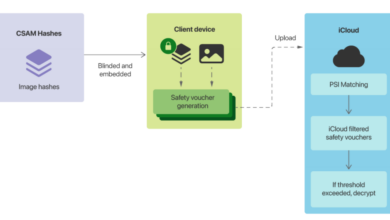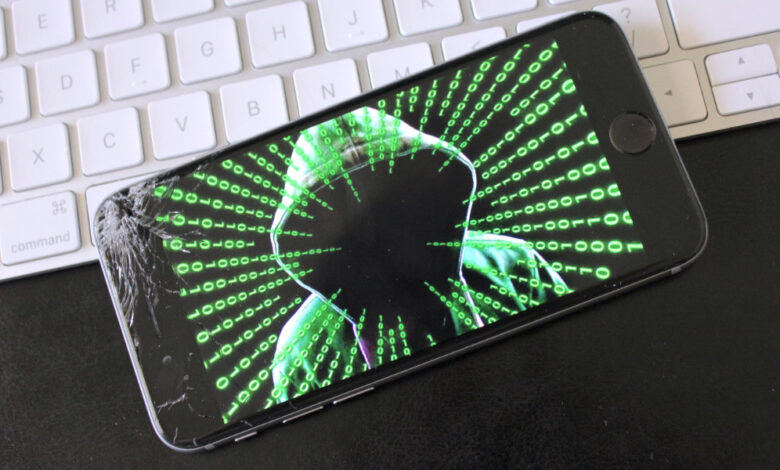
Apple Inc Issues Fix to Pegasus Spyware Vulnerability
Apple Inc issues fix to pegasus spyware vulnerability in iPhones – phew! That’s a mouthful, isn’t it? But it’s a seriously big deal. Recently, a major security flaw allowing the notorious Pegasus spyware to infiltrate iPhones was discovered. This vulnerability allowed attackers to potentially access sensitive user data, raising serious concerns about privacy and security. This post dives into the details of the vulnerability, Apple’s response, and what you can do to protect yourself.
We’ll explore the technical aspects of the vulnerability, the impact on users, and Apple’s swift action to patch the problem. We’ll also cover important steps you should take to ensure your iPhone is secure and protected against future threats. Think of this as your one-stop shop for everything you need to know about this critical security update.
Vulnerability Details
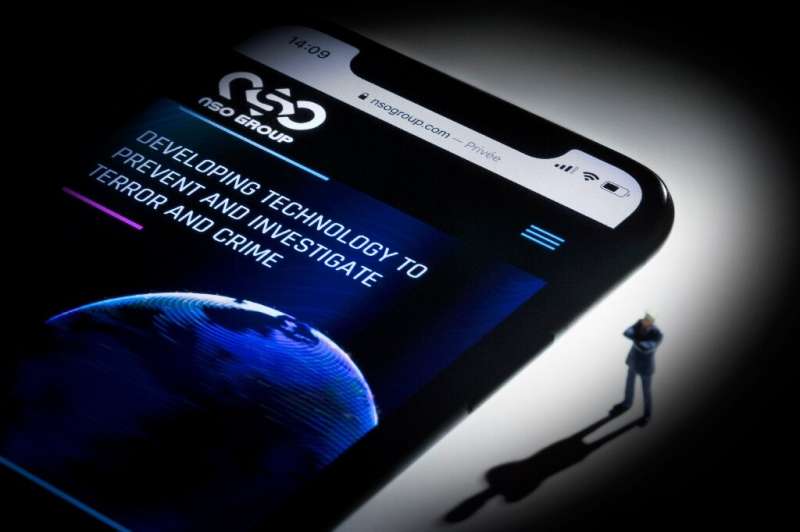
The Pegasus spyware vulnerability exploited a zero-day flaw in Apple’s iOS operating system, allowing attackers to remotely install and execute malicious code on iPhones without the user’s knowledge or interaction. This sophisticated attack leveraged a combination of vulnerabilities to bypass Apple’s security mechanisms and gain complete control over the affected devices. The vulnerability’s severity underscored the ongoing challenge of maintaining robust security against highly advanced and persistent threats.The methods used by Pegasus to exploit this vulnerability involved a sophisticated chain of exploits, targeting multiple components within iOS.
This wasn’t a single point of failure but rather a carefully orchestrated sequence of vulnerabilities that, when chained together, allowed for complete compromise. The attackers likely used specially crafted malicious links or messages, enticing users to interact with them, thereby initiating the exploit chain. Once the initial vulnerability was triggered, Pegasus would then install itself, gaining root access and allowing for the exfiltration of sensitive data, including messages, photos, location data, and microphone recordings.
The complexity of the exploit chain highlighted the advanced capabilities of the attackers and the difficulty of detecting such attacks.
Affected iPhone Models and iOS Versions
The scope of the Pegasus vulnerability was significant, affecting a range of iPhone models and iOS versions. While the precise range of affected devices wasn’t publicly released by Apple in complete detail for security reasons, reports indicated that older iOS versions were particularly vulnerable. The vulnerability was patched by Apple in subsequent iOS updates, but the timeline of exploitation suggests that the vulnerability was actively exploited for some time before the patch was released.
The lack of precise public details highlights the sensitive nature of zero-day vulnerabilities and the need for coordinated disclosure to prevent further exploitation.
Timeline of Vulnerability Discovery, Exploitation, and Patching
The exact timeline of the Pegasus vulnerability’s discovery, exploitation, and patching remains somewhat opaque, with information emerging gradually from various sources. However, it’s understood that the vulnerability was discovered and exploited by NSO Group, the creators of Pegasus spyware, sometime before Apple became aware of the issue. Apple subsequently released security updates addressing the vulnerability, but the period between exploitation and patching allowed for significant compromise of targeted devices.
This highlights the cat-and-mouse game between security researchers and developers, and the attackers constantly seeking new vulnerabilities. The lack of precise dates underscores the sensitivity of such information and the need for careful coordination between researchers, vendors, and law enforcement agencies.
Apple’s Response and Patch
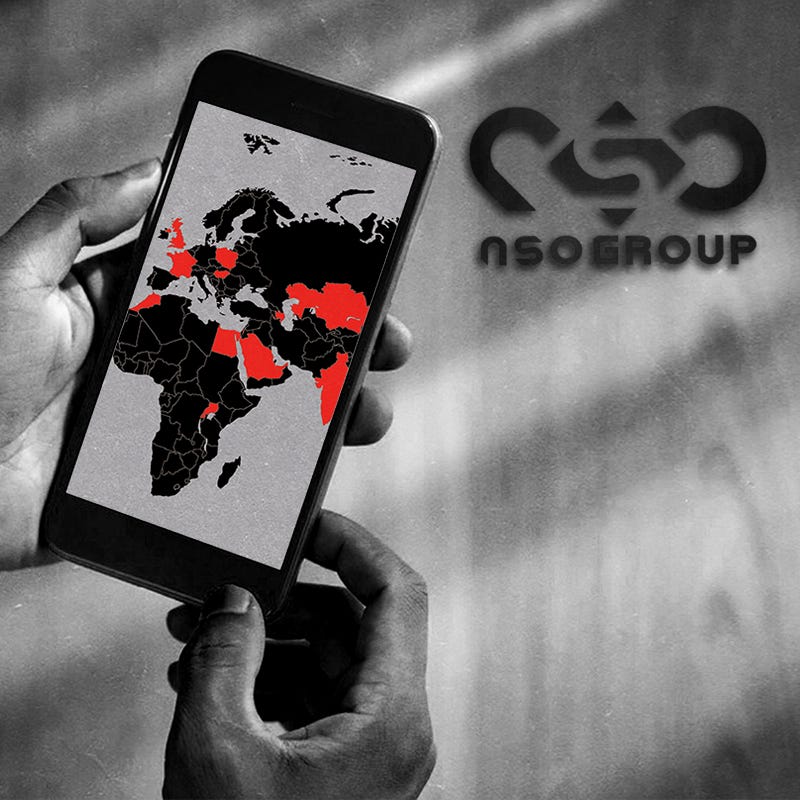
Apple’s swift response to the Pegasus spyware vulnerability demonstrated their commitment to user security. Facing a sophisticated threat capable of compromising the privacy of iPhone users, the company acted decisively to develop and deploy a comprehensive patch. This involved a multi-faceted approach, encompassing both immediate remediation and long-term preventative measures.The vulnerability allowed attackers to exploit a zero-day flaw in iOS to gain unauthorized access to user data.
Apple’s response wasn’t merely reactive; it was proactive in identifying and addressing the root causes of the vulnerability, ensuring a robust and lasting solution. The company’s actions underscore the ongoing arms race between cybersecurity firms and those seeking to exploit software vulnerabilities.
The Patch’s Content and Functionality
The security patch released by Apple addressed the specific zero-day vulnerability exploited by Pegasus. This wasn’t a simple code fix; it involved a fundamental reworking of the affected system components to prevent similar attacks in the future. The patch included several key improvements, strengthening the system’s defenses against unauthorized access and enhancing the overall security architecture of iOS.
Crucially, the patch focused on preventing the initial exploitation, stopping the attack before it could gain a foothold within the system. This contrasts with patches that merely address the consequences of a successful attack.
Mitigation of the Vulnerability and Prevention of Future Exploitation
The patch’s primary function was to eliminate the exploitable weakness in the iOS kernel. By modifying the core code responsible for handling the vulnerable component, Apple effectively removed the entry point for Pegasus. The update included improved memory management techniques to prevent malicious code from gaining unauthorized access to sensitive data. Furthermore, the patch implemented more stringent checks and validation procedures to detect and block suspicious activity before it could escalate into a full-blown compromise.
These enhancements make it significantly more difficult for attackers to exploit similar vulnerabilities in the future.
Distribution and Deployment of the Patch, Apple inc issues fix to pegasus spyware vulnerability in iphones
Apple deployed the patch through its standard software update mechanism. Affected users received a notification prompting them to install the update. The update was seamlessly integrated into the existing iOS update process, ensuring a straightforward and user-friendly experience. The company leveraged its robust infrastructure to ensure a rapid and efficient rollout of the patch to millions of devices globally.
This timely and efficient distribution minimized the window of vulnerability, significantly reducing the risk of widespread exploitation.
Impact and Implications
The Pegasus spyware vulnerability, successfully exploited through zero-day flaws in iOS, had significant implications for iPhone users’ data and privacy. The potential for undetected surveillance, coupled with the sophistication of the spyware, raised serious concerns about the security of even the most secure devices. Understanding the full impact requires examining both the immediate consequences and the long-term effects on user trust and Apple’s security practices.The successful exploitation of Pegasus could have resulted in the complete compromise of an iPhone user’s digital life.
This includes access to personal communications (messages, emails, calls), location data, photos, videos, and even microphone and camera feeds. Critically, the vulnerability allowed for the extraction of data without the user’s knowledge or consent, violating fundamental privacy rights. Imagine the consequences for journalists, activists, or human rights workers whose confidential information could be exposed, potentially leading to serious harm or even death.
This isn’t a hypothetical scenario; documented cases of Pegasus exploitation have shown precisely these devastating outcomes.
Consequences of Successful Pegasus Exploitation
Successful exploitation of the Pegasus vulnerability could have led to a range of severe consequences, depending on the target and the attacker’s motives. Data breaches could expose sensitive personal information, leading to identity theft, financial loss, or reputational damage. Furthermore, the ability to monitor location data could facilitate physical stalking or harassment. For individuals in high-risk professions, such as journalism or activism, the consequences could be far more severe, potentially leading to imprisonment, physical harm, or even death.
The persistent nature of spyware like Pegasus allows for long-term surveillance, eroding privacy and undermining trust. The lack of user knowledge or control over the situation is a key factor amplifying the severity of the consequences.
Comparison to Other Significant Apple Security Breaches
While the Pegasus vulnerability stands out due to its sophisticated nature and the targeted nature of its exploitation, it’s not the first significant security breach affecting Apple products. Previous incidents, such as the 2016 iCloud celebrity photo leak, while different in nature, highlight the ongoing challenges in maintaining perfect security, even for a company with Apple’s resources. The Pegasus incident, however, differed in its ability to circumvent the standard security mechanisms of the iOS operating system, requiring a more profound response from Apple and highlighting the need for ongoing vigilance against advanced persistent threats.
The scale of potential impact, targeting specific individuals rather than a broad audience, also differentiates this incident.
Long-Term Security Improvements Implemented by Apple
In response to the Pegasus vulnerability, Apple has likely implemented several long-term security improvements, including enhanced protections against zero-day exploits and more robust mechanisms for detecting and mitigating spyware. These improvements may involve changes to the iOS kernel, improved sandboxing techniques, and possibly increased reliance on hardware-level security features. Further strengthening of Apple’s security research and development efforts is also anticipated, with a focus on proactive threat detection and response.
The company’s commitment to transparency regarding security vulnerabilities and its rapid patching response demonstrates a commitment to improving its security posture in the long term. These improvements aim to build greater user trust and maintain Apple’s reputation for security.
User Actions and Best Practices
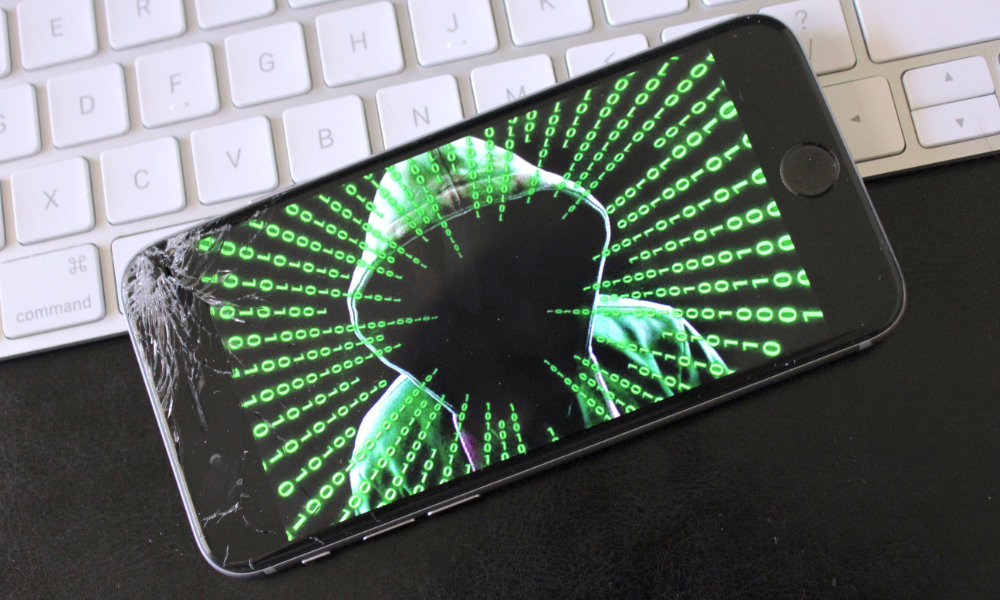
Following the discovery and patching of the Pegasus spyware vulnerability, proactive steps are crucial to ensure your iPhone’s security. Taking these measures minimizes the risk of future compromises and strengthens your overall digital defense. Remember, staying vigilant is key in the ever-evolving landscape of cybersecurity threats.
Protecting your iPhone from spyware requires a multi-faceted approach encompassing software updates, careful app selection, and mindful online behavior. The following recommendations are designed to help you maintain a high level of security and privacy.
Recommended Actions for iPhone Users
This list Artikels immediate actions you can take to bolster your iPhone’s security against spyware and other threats. These steps are simple yet effective in minimizing your vulnerability.
- Update your iOS immediately: Installing the latest iOS update is the single most important step. This update contains the security patch that addresses the Pegasus vulnerability.
- Review your installed apps: Carefully examine the apps you’ve downloaded, paying close attention to those with excessive permissions or those you don’t recognize. Uninstall any suspicious applications.
- Enable two-factor authentication (2FA): 2FA adds an extra layer of security to your Apple ID and other online accounts, making it significantly harder for attackers to gain unauthorized access.
- Be cautious of phishing attempts: Be wary of suspicious emails, text messages, or websites that ask for your personal information. Never click on links from unknown sources.
- Use strong and unique passwords: Employ complex passwords for all your online accounts, and avoid reusing passwords across multiple platforms.
- Keep your software updated: Regularly check for and install updates for all your apps, not just iOS. Outdated software can contain vulnerabilities that attackers can exploit.
Best Practices for Software Updates and Device Security
Maintaining a secure iPhone involves a consistent routine of software updates and security checks. The table below summarizes key practices and resources to help you stay protected.
| Action | Description | Importance | Resources |
|---|---|---|---|
| Install iOS Updates | Download and install the latest iOS version as soon as it’s available. | Critical – Addresses security vulnerabilities. | Settings app > General > Software Update |
| Update Apps | Regularly check the App Store for updates to your installed applications. | High – Many apps contain their own security updates. | App Store app > Updates tab |
| Enable Automatic Updates | Configure your device to automatically download and install updates. | Medium – Ensures you always have the latest security patches. | Settings app > General > Software Update |
| Review App Permissions | Check the permissions granted to each app and revoke unnecessary access. | High – Prevents apps from accessing sensitive data without your consent. | Settings app > Privacy & Security |
Verifying Security Patch Installation
To confirm the Pegasus patch is installed, check your iPhone’s iOS version. The version number will reflect the update containing the fix. This is a straightforward way to ensure you are protected.
- Go to Settings.
- Tap General.
- Select About.
- Look for the Software Version. If the version number matches or exceeds the version number containing the security patch announced by Apple (check Apple’s official security updates page for this information), the patch is installed.
Checking for and Installing Software Updates
Regularly checking for and installing software updates is a crucial aspect of maintaining your iPhone’s security. Follow these steps to ensure your device is up-to-date.
- Open the Settings app.
- Tap General.
- Select Software Update.
- If an update is available, tap Download and Install. You may need to enter your passcode.
- Follow the on-screen instructions to complete the installation. Your iPhone will restart during the process.
Technical Analysis of the Patch
Apple’s response to the Pegasus spyware vulnerability involved a multifaceted approach, going beyond simply patching a single exploit. The update addressed several underlying weaknesses in the system’s architecture, demonstrating a proactive strategy rather than a reactive one focused solely on immediate threat mitigation. Understanding the technical details of this patch reveals the complexity involved in securing modern operating systems against sophisticated attacks.The core of Apple’s patch focused on strengthening kernel memory protections and enhancing the system’s ability to detect and prevent unauthorized memory access.
This involved significant changes at the low-level system calls, modifying how processes interact with the kernel and limiting the potential attack surface. Specifically, improvements were made to the kernel’s memory management unit (MMU) to better isolate sensitive kernel data from user-space processes. This prevented Pegasus from leveraging vulnerabilities to gain unauthorized access to kernel memory and subsequently execute arbitrary code.
Furthermore, the patch incorporated improvements to the system’s code signing and verification processes, making it harder for malicious code to bypass security checks and gain execution privileges.
Kernel Memory Protection Enhancements
The patch implemented several key improvements to kernel memory protection. These changes involved refining the existing kernel Address Space Layout Randomization (ASLR) mechanism, making it more robust against sophisticated attacks that attempted to bypass ASLR. Additionally, the patch introduced new memory tagging mechanisms to better track and identify memory regions, enhancing the system’s ability to detect and prevent unauthorized memory access.
These improvements made it considerably more difficult for attackers to predict the location of critical kernel data structures, a crucial step in exploiting many memory-based vulnerabilities. The effectiveness of these enhancements can be compared to similar techniques used in other operating systems, such as Linux’s Kernel Address Space Layout Randomization (KASLR) and its various memory protection features. While direct comparisons are difficult without access to the precise implementation details, the general approach aligns with industry best practices and suggests a high level of effectiveness.
Code Signing and Verification Improvements
Prior to the patch, a weakness existed in the code signing and verification process, potentially allowing malicious code to bypass security checks. The updated system now employs more stringent verification procedures, ensuring that only properly signed and authenticated code can execute. This includes enhancements to the system’s ability to detect and reject code that has been tampered with or modified after signing.
This reduces the risk of attackers injecting malicious code into the system by modifying legitimate system components. The improved code signing process can be compared to the use of digital signatures in software distribution, where verifying the signature ensures the software’s authenticity and integrity. The potential unintended consequences are minimal, mostly related to compatibility issues with older or improperly signed applications.
Apple likely addressed these concerns through rigorous testing and compatibility checks before releasing the patch.
Potential Unintended Consequences
While Apple’s patch effectively addressed the Pegasus vulnerability, there is always a possibility of unintended consequences. For instance, the enhanced memory protections could, in theory, lead to a slight performance decrease in some applications. However, the impact is likely to be negligible for most users. Another potential issue, though less likely, is the possibility of incompatibility with some older or less well-maintained third-party applications that rely on older or less secure coding practices.
This risk is mitigated by Apple’s rigorous testing and quality assurance processes. Real-world examples of such unintended consequences from security patches are rare but not unheard of; often, these manifest as minor performance glitches that are quickly addressed in subsequent updates.
Legal and Ethical Considerations
The Pegasus spyware vulnerability exposed a complex interplay of legal and ethical issues, highlighting the precarious balance between national security interests, individual privacy rights, and the responsibilities of technology companies. The use of such powerful surveillance tools raises significant concerns about the potential for abuse and the erosion of fundamental freedoms.The legal implications of Pegasus are multifaceted and depend heavily on jurisdiction.
In many countries, the deployment of spyware without proper judicial oversight and informed consent constitutes a serious violation of privacy laws and potentially criminal offenses. The targeting of journalists, activists, and human rights defenders raises concerns about the suppression of free speech and the potential for political persecution. Legal challenges are likely to continue as victims seek redress and accountability.
Legal Implications of Pegasus Spyware
The use of Pegasus raises several key legal issues. Firstly, the unauthorized access and surveillance of an individual’s device violates fundamental privacy rights protected under various national and international laws, including the GDPR in Europe and similar privacy acts in other regions. Secondly, the potential for misuse of obtained data for blackmail, extortion, or other illegal activities presents significant legal risks for both the developers and users of the spyware.
Thirdly, the lack of transparency and accountability surrounding the deployment of Pegasus raises concerns about due process and the rule of law. Cases are already emerging where individuals are pursuing legal action against NSO Group, the developers of Pegasus, for alleged violations of their rights. The legal landscape is evolving rapidly, with ongoing investigations and legal battles likely to shape the future of surveillance technology regulation.
Ethical Considerations Surrounding Spyware Development and Deployment
The ethical implications of Pegasus are equally profound. The development and deployment of such powerful surveillance tools raise serious questions about the balance between national security and individual rights. The potential for abuse is immense, particularly when spyware is used to target vulnerable populations or to suppress dissent. Ethical guidelines and regulations are needed to ensure that the development and use of surveillance technologies are aligned with fundamental human rights and democratic values.
Furthermore, the lack of transparency surrounding the use of Pegasus underscores the need for greater accountability and oversight in the development and deployment of these technologies. The ethical debate surrounding the use of spyware extends beyond its direct impact on individuals to encompass the broader societal implications for trust, freedom of expression, and democratic governance.
Apple’s swift patch for the Pegasus spyware vulnerability in iPhones highlights the constant battle against sophisticated threats. It makes you think about the security implications of app development, and how platforms like Domino are evolving – check out this insightful article on domino app dev the low code and pro code future to learn more – because ultimately, robust security needs to be baked into every app, from the design phase onwards, just like Apple’s recent response demonstrates.
Comparison of Apple’s Response with Other Tech Companies
Apple’s relatively swift and decisive response to the Pegasus vulnerability stands in contrast to the responses of some other tech companies to similar security threats. While many companies have implemented security updates to address vulnerabilities, Apple’s proactive approach, including public acknowledgment of the issue and direct engagement with affected users, has been praised. This proactive approach has set a new benchmark for how technology companies should respond to major security threats, particularly those involving sophisticated spyware.
However, the comparison isn’t universally positive; some argue that Apple’s response was only effective because of the significant media attention surrounding the issue.
Potential Legal and Regulatory Changes
The Pegasus incident is likely to accelerate calls for stronger legal and regulatory frameworks governing the development, sale, and use of surveillance technologies. We may see increased scrutiny of companies that develop and sell spyware, stricter regulations on the export of such technologies, and greater transparency requirements regarding their deployment. Governments may also implement stricter data protection laws and enhance the legal recourse available to victims of spyware attacks.
International cooperation will be crucial to ensure that these regulations are effective and harmonized across jurisdictions. The European Union’s efforts to regulate AI and surveillance technologies, for instance, could serve as a model for other regions. This incident highlights the urgent need for global standards to prevent the misuse of powerful surveillance technologies and protect fundamental human rights.
Final Conclusion
The Pegasus spyware vulnerability highlighted a critical need for robust security measures in our increasingly digital world. While Apple’s swift response to patch the vulnerability is commendable, it underscores the ongoing cat-and-mouse game between tech companies and malicious actors. Staying informed about security updates and practicing good digital hygiene are crucial for protecting your personal data. Remember to always update your software and be vigilant about suspicious links or messages.
Your privacy is worth it!
Clarifying Questions: Apple Inc Issues Fix To Pegasus Spyware Vulnerability In Iphones
What specific iPhone models were affected by the Pegasus vulnerability?
While the exact range varied depending on the specific exploit, the vulnerability impacted a range of iPhones and iOS versions. Apple’s security update addressed the vulnerability across multiple models and operating systems.
How do I know if my iPhone is vulnerable and if the patch has been successfully installed?
Go to Settings > General > Software Update. If an update is available, install it. After installing the update, check your iOS version number in Settings > General > About. You should see the updated version number reflecting the security patch.
What if I think my iPhone has already been compromised by Pegasus?
This is a serious concern. It’s advisable to contact Apple Support directly or consult with a cybersecurity professional. They can provide guidance on assessing the situation and taking appropriate steps.
Are there any other steps I can take besides installing the patch to improve my iPhone’s security?
Absolutely! Enable two-factor authentication, use strong and unique passwords, be cautious of phishing attempts, and only download apps from trusted sources. Regularly backing up your data is also a crucial preventative measure.
